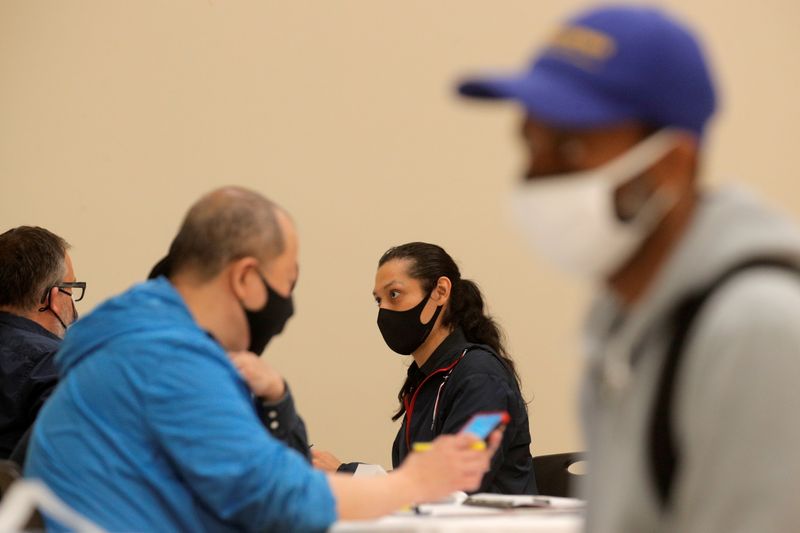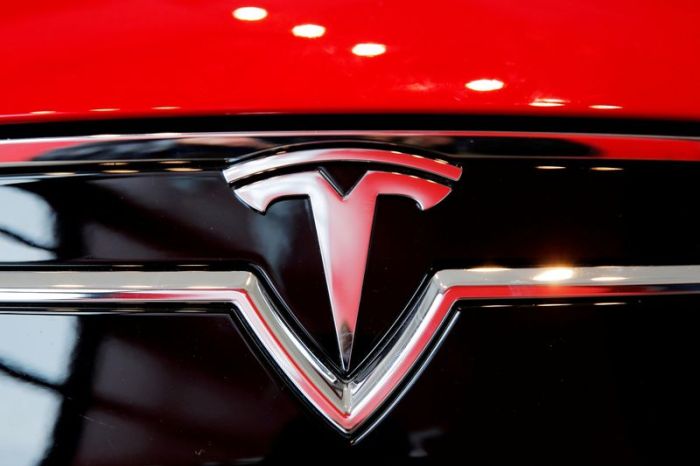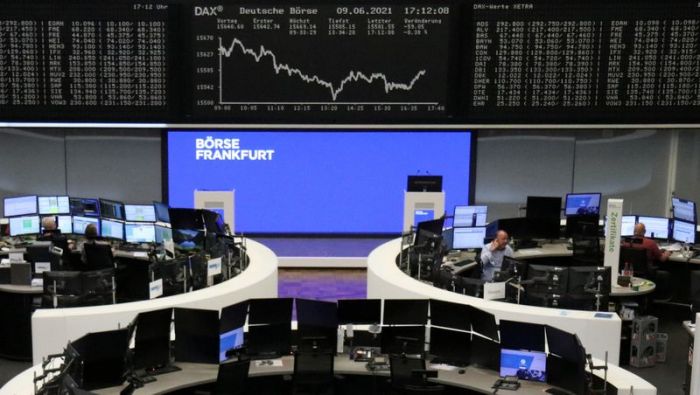WASHINGTON (Reuters) – U.S. consumer prices rose solidly in May, leading to the biggest annual increase in nearly 13 years as a reopening economy boosted demand for travel-related services, while a global semiconductor shortage drove up prices for used motor vehicles.
The pandemic’s easing grip on the economy was also underscored by other data on Thursday showing the number of Americans filing new claims for unemployment benefits fell last week to the lowest level in nearly 15 months.
Vaccinations against COVID-19, trillions of dollars from the government and record-low interest rates are whipping up demand, leaving companies scrambling for raw materials and labor. Very expensive used cars and trucks accounted for about one-third of the rise in consumer inflation last month, reflecting a global semiconductor shortage, which is undercutting auto production.
May’s inflation drivers appear to be temporary, fitting in with Federal Reserve Chair Jerome Powell’s repeated assertion that higher inflation will be transitory.
“Parts of the economy contributing the most to inflation in April and May are going through understandable short-term adjustments or merely reflating back to ‘normal’ levels,” said Chris Low, chief economist at FHN Financial in New York. “Areas not impacted by the pandemic are moderating the CPI rise. But this report confirms demand is exceeding supply.”
The consumer price index increased 0.6% last month after surging 0.8% in April, which was the largest gain since June 2009. Food prices rose 0.4%, but gasoline declined for a second straight month. In the 12 months through May, the CPI accelerated 5.0%. That was the biggest year-on-year increase since August 2008 and followed a 4.2% rise in April.
The jump partly reflected the dropping of last spring’s weak readings from the calculation. May was probably the peak in the CPI, with these so-called base effects expected to level off in June. Economists polled by Reuters had forecast the CPI rising 0.4% in May and vaulting 4.7% year-on-year.
Excluding the volatile food and energy components, the CPI increased 0.7% after soaring 0.9% in April. The co-called core CPI was boosted by a 7.3% rise in used cars and trucks prices. New vehicle prices also increased strongly.
With at least half of the adult U.S. population fully vaccinated against COVID-19, Americans are traveling.
Car rental prices increased 12.1% in May. The cost of airline tickets and hotel accommodation also rose.
Consumers paid more for motor vehicle insurance, furniture and bedding, rents as well as apparel. But they got some relief from healthcare costs, which dipped 0.1% as prices for prescription medication fell 0.3%.
The core CPI shot up 3.8% in the 12 months through May, the largest increase since June 1992. The Fed has signaled it could tolerate higher inflation for some time to offset years in which inflation was lodged below its 2% target, a flexible average.
The U.S. central bank’s preferred inflation measure, the personal consumption expenditures price index, excluding the volatile food and energy components, rose 3.1% in April, the biggest gain since July 1992. The Fed slashed its benchmark overnight interest rate to near zero last year and is pumping money into the economy through monthly bond purchases.
“Figures like today’s CPI will certainly be raising eyebrows at the Fed, but the bottom line is they will likely need additional evidence to determine whether upward inflation pressures will be more persistent,” said Charlie Ripley, senior investment strategist for Allianz Investment Management.
Investors shrugged off the strong inflation, lifting stocks on Wall Street. The dollar was steady against a basket of currencies. U.S. Treasury prices were mixed.
Graphic: Inflation – https://graphics.reuters.com/USA-STOCKS/jznvnwqkjpl/inflation.png
LAYOFFS EASING
Inflation could get a boost from the labor market, where layoffs are subsiding. Employers are raising wages as they compete for scarce workers, with millions of unemployed Americans remaining at home because of trouble securing child care, generous unemployment benefits and lingering fears of the virus even though vaccines are now widely accessible.
In another report on Thursday, the Labor Department said initial claims for state unemployment benefits fell 9,000 a seasonally adjusted 376,000 for the week ended June 5. That was the lowest since mid-March 2020 when the first wave of COVID-19 infections barreled through the country, leading to closures of nonessential businesses.
Claims have now decreased for six straight weeks. The drop in applications was led by California and Pennsylvania.
Graphic: Jobless claims – https://graphics.reuters.com/USA-STOCKS/nmopaeblqpa/joblessclaims.png
Though layoffs are subsiding, claims remain well above the 200,000 to 250,000 range that is viewed as consistent with a healthy labor market. They have, however, dropped from a record 6.149 million in early April 2020.
Further decreases in applications are likely as Republican governors in at least 25 states, including Florida and Texas, are cutting off unemployment programs funded by the federal government for residents starting on Saturday.
These states account for about 40% of the economy. The benefits being terminated early include a weekly $300 unemployment subsidy, which businesses say is discouraging the jobless from seeking work.
The number of people continuing to receive benefits after an initial week of aid decreased 258,000 to 3.5 million during the week ended May 29. These so-called continuing claims had been stuck in a 3.6 million-3.8 million range since the middle of March, indicating workers were rejoining the labor force.
At least 15.3 million people were on unemployment benefits under all programs during the week ended May 22. Worker shortages, despite employment being still 7.6 million jobs below its peak in February 2020, boosted wage growth in May. There are a record 9.3 million unfilled jobs in the economy.
(Reporting by Lucia Mutikani; Editing by Chizu Nomiyama and Andrea Ricci)
























